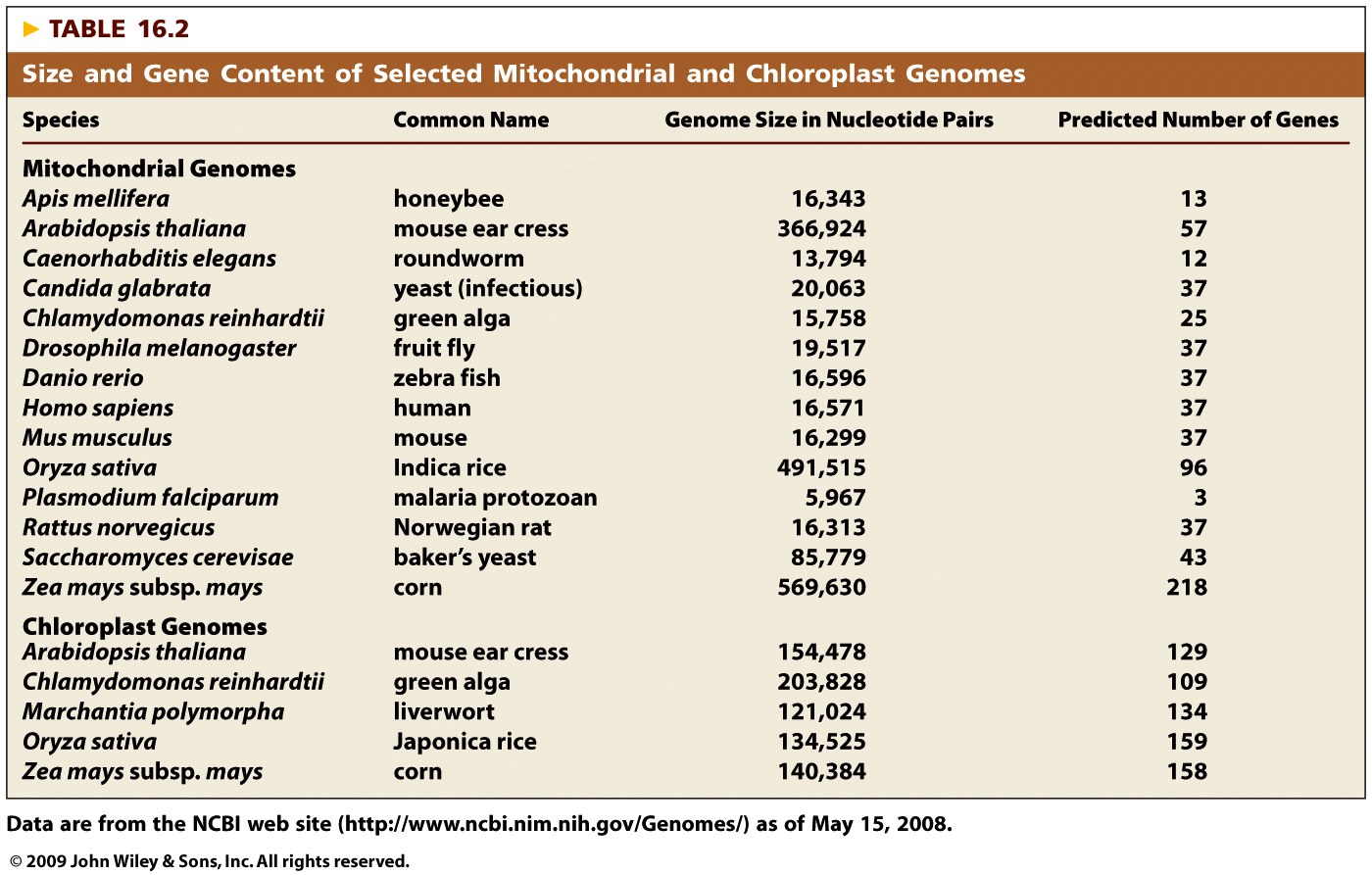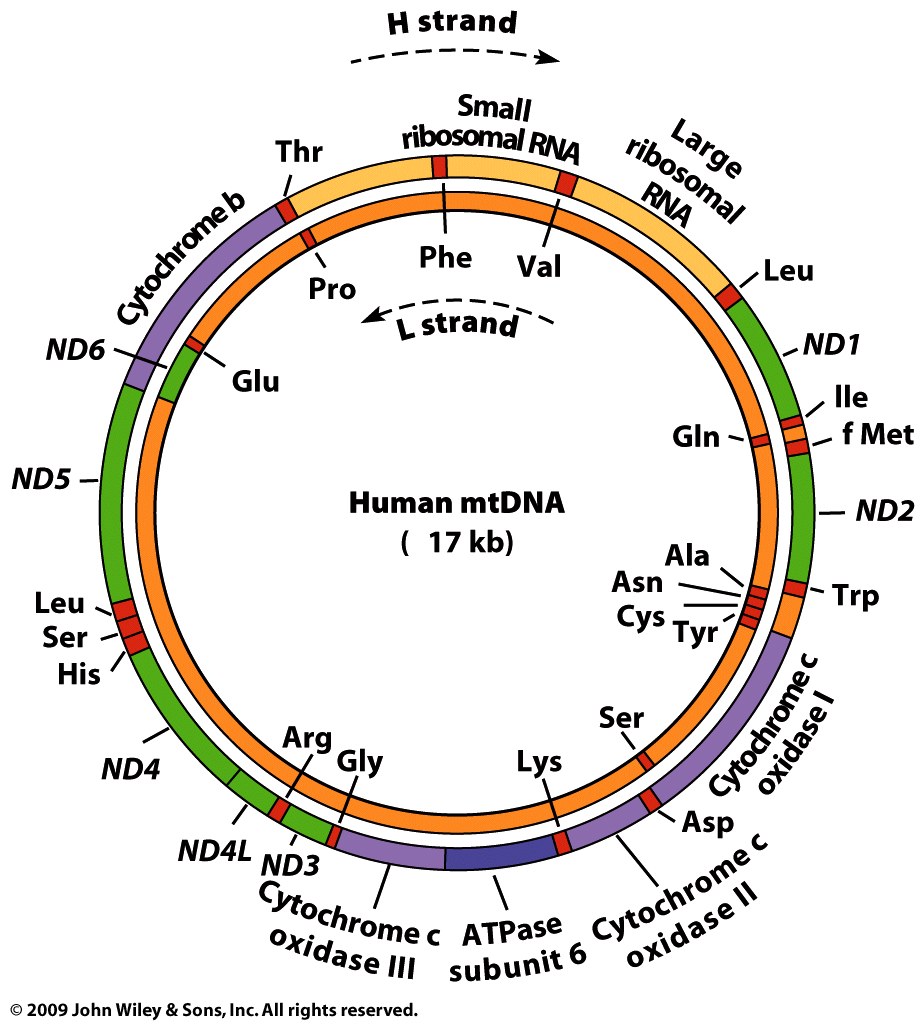CSS Menus Tutorial Css3Menu.com
Samford University -- Department of Environmental and Biological Sciences
Genetics -- Biol 333
Extranuclear Inheritance
| We have already encountered one major exception to Mendel's concepts, namely linkage, which is an exception to his Law of Independent Assortment. The other major exception is the presence of genes in the cytoplasm, primarily in mitochondria and chloroplasts. Mendel's laws are all based on nuclear gene heredity--that is meiosis (although he knew nothing about meiosis). Cytoplasmic genes do not segregate to daughter cells according to meiosis, so do not obey his laws. For that reason, the inheritance of these cytoplasmic genes is often referred to as non-Mendelian genetics. | |
|
Organelle Genetics: There
are two separate Genetic Systems involved in the
production of mitochondria and chloroplasts:
|
|
Organelle Genomes: Mitochondria
and chloroplasts have their own small DNA molecules that
are usually circular (except in some algae and protozoa)
and are present in multiple copies in each organelle.
|
  |
|
 |
| Organelle Division: Mitochondria and chloroplasts are never made de novo, but always come from pre-existing organelles. DNA replication occurs throughout the cell cycle. Organelle division occurs by furrowing of the inner membrane with DNA molecules being distributed between the daughter organelles. |  |
| Organellar Inheritance:
Inheritance of mitochondrial and chloroplast genes is
non-Mendelian (cytoplasmic inheritance, extranuclear
inheritance). In yeast, this leads to random segregation
of traits. In higher organisms, non-Mendelian inheritance
is seen as maternal inheritance, since mitochondria and
chloroplast are usually inherited via the ovum only.
Heteroplasmy and lead to mosaicism. Why are mitochondria
only inherited from the mother?:
http://science.sciencemag.org/content/early/2016/06/22/science.aaf4777.abstract |
|
| Other Extranuclear Genes: Endosymbionts like kappa (killer) in Paramecium. | |
| Human Mitochondrial Traits Many are lethal and only seen with heteroplasmy (some normal mitochondria present). | |